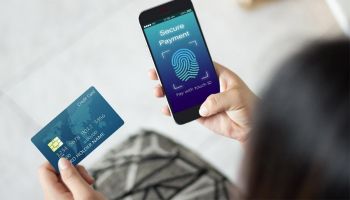Is Mobile Banking Safe? Here's 5 Tips for Security
Online banking is usually safe but not invulnerable to threats
- |
- Written by Jaideep Sharma

Introduction
Mobile banking is a service that enables customers to complete several transactions such as making deposits, checking balances and paying bills. It also provides 24-hour access to customers who are looking to complete any banking tasks or reach customer service.
While online banking provides convenience and efficiency, there are concerns about safety. Online banking is usually safe but not invulnerable to threats. Despite having things that can compromise security, there are measures that banks and customers can take to ensure security.
• Two Factor Authentication
Financial institutions can make banking safer on mobile devices by offering two-factor authentication. This is known as a two-step verification process where a user provides two authentication factors. In most cases, a password or a fingerprint. By using this, users will be get a higher level of assurance compared to single-factor authentication. If a bank or customer is looking to use an additional layer of security, they will benefit most by two-factor authentication.
• Wireless Transport Layer Security
Another way banks and customers can have more security is by utilizing Wireless Transport Layer Security (WTLS). WTLS addresses any problems that surround mobile networks. This includes limited processing power, memory capacity, and low bandwidth. Using WTLS will provide financial institutions and customers with authentication, data integrity, and privacy protection. As a result, customers have their data and transactions protected.
• SSL Encryption
Banks can make banking safer on mobile by using Secure Sockets Layer (SSL) encryption. SSL serves as one of the standard security options that ensure the safety of transactions on the internet. With SSL encryption, banks will be able to offer an encrypted link between the server and the client. This allows sensitive account information to be transmitted securely on the internet. With SSL encryption, customers will be less likely to get their important data compromised.
Risks Of Banking On Mobile Devices
Since mobile devices are becoming more popular, people and businesses are looking to complete transactions on these devices. Like many things online, risks are associated with banking through mobile. All it takes is for one security breach and hackers can get access to very sensitive information.
• Data Leakage
Data held by financial institutions is highly valuable. For hackers and identity thieves, getting important data is their primary objective. When data is leaked, hackers get access to information and begin seizing funds from account holders and banks. Data leakage accounts for around 45% of all reported incidents.
• Phishing Attacks
Since email is widely used, there are times when someone will accidentally open up a malicious email. When this happens a hacker can access confidential information. Around 26% of email account holders lose sensitive data from phishing attacks.
• Ransomware
Those who get ransomware are usually those who don’t use the most updated antivirus software and/or an unreliable VPN service. it is important to update this software regularly to avoid ransomware. A little over 5% of ransomware attacks take place due to a user having unreliable security software. As a result, important data is stolen.
Benefits Of Mobile App Security
Since banks are working with sensitive data, it's very important to find the best ways to secure it. Financial institutions need to secure their sites and the customer’s information whenever it is accessed. There are many benefits of mobile app security.
One of the benefits of mobile app security is being able to prevent access from hackers and identity thieves. They will not be able to access personal information with strong security.
Mobile app security also improves the reputation of the bank and makes it more trustworthy.
5 Tips to Prevent Risk
When a financial institution is looking to prevent the risks of banking on mobile, they can do a few things to ensure that information is protected at all times.
• Prevent Employees From Accessing Accounts Without Customer Consent
Banks can prevent risk by allowing employees to access personal accounts of customers only when the customer is present.
• Install a Centralized 24 Hour Mobile Security Device
Banks can also install a centralized device that provides 24-hour security on mobile devices.
• Don’t Download Any Unverified Apps
Inform customers and employees to never download unverified apps on devices of both the bank and its customers.
• Keep Employees From Accessing Mobile Devices For Personal Use
Financial institutions can also apply policies that restrict using mobile devices owned by the bank for personal purposes.
• Use a Remote Wipe Strategy
Banks and customers can also use a remote wipe strategy whenever important data is compromised. This will remove any trace of sensitive information from the device.
Conclusion
Financial institutions looking to protect sensitive information will need to use a few resources for mobile banking security. Banks need to focus on encryption, more comprehensive authentication and wireless transport layer security. They will need to limit access to mobile devices for employees and ensure that a mobile banking app is safe to use. With a secure mobile banking app, banks will be able to ensure security for themselves and their customers.
Jaideep Sharma is the director of operations at Chetu Inc headquarters in Plantation, Florida. With over 20 years of experience in developing banking software, he has successfully developed applications that have brought advanced levels of cyber security to the banking industry.
Tagged under Risk Management, Mobile, Online, Security, Cyberfraud/ID Theft, Feature3, Feature,













